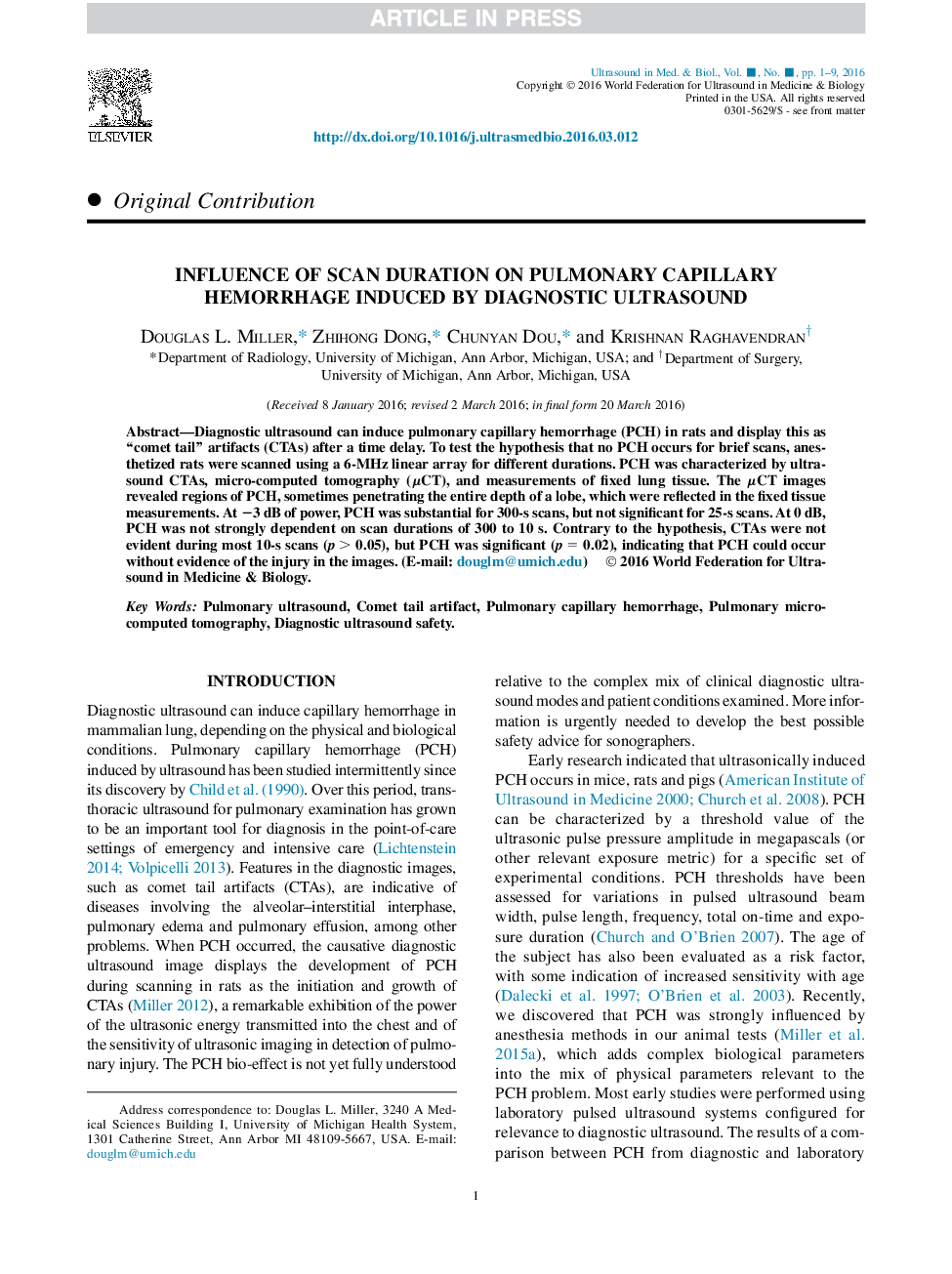| Article ID | Journal | Published Year | Pages | File Type |
|---|---|---|---|---|
| 1760185 | Ultrasound in Medicine & Biology | 2016 | 9 Pages |
Abstract
Diagnostic ultrasound can induce pulmonary capillary hemorrhage (PCH) in rats and display this as “comet tail” artifacts (CTAs) after a time delay. To test the hypothesis that no PCH occurs for brief scans, anesthetized rats were scanned using a 6-MHz linear array for different durations. PCH was characterized by ultrasound CTAs, micro-computed tomography (μCT), and measurements of fixed lung tissue. The μCT images revealed regions of PCH, sometimes penetrating the entire depth of a lobe, which were reflected in the fixed tissue measurements. At â3 dB of power, PCH was substantial for 300-s scans, but not significant for 25-s scans. At 0 dB, PCH was not strongly dependent on scan durations of 300 to 10 s. Contrary to the hypothesis, CTAs were not evident during most 10-s scans (p > 0.05), but PCH was significant (p = 0.02), indicating that PCH could occur without evidence of the injury in the images.
Related Topics
Physical Sciences and Engineering
Physics and Astronomy
Acoustics and Ultrasonics
Authors
Douglas L. Miller, Zhihong Dong, Chunyan Dou, Krishnan Raghavendran,
